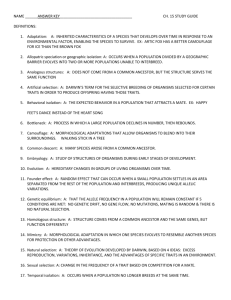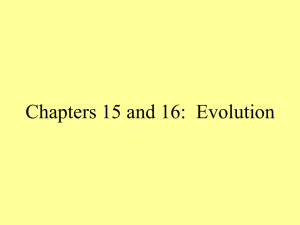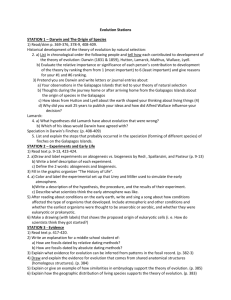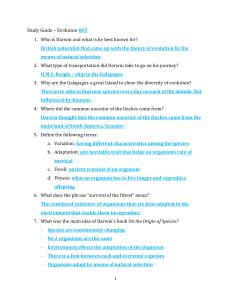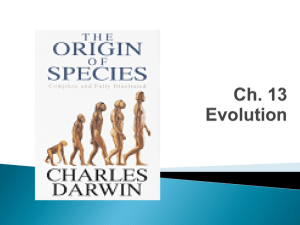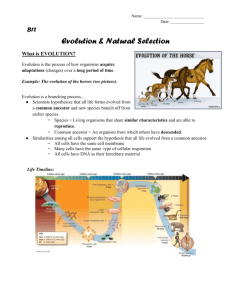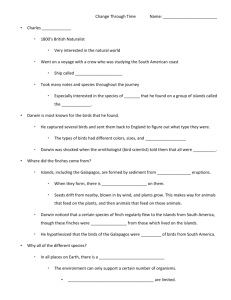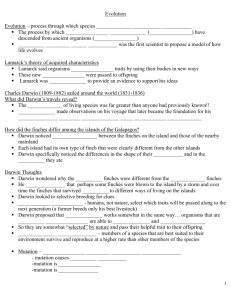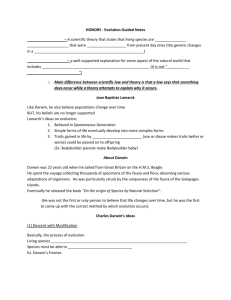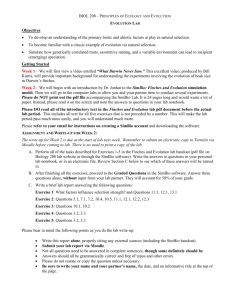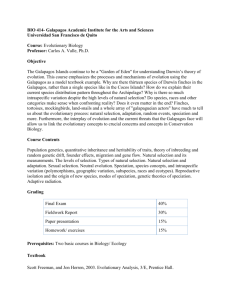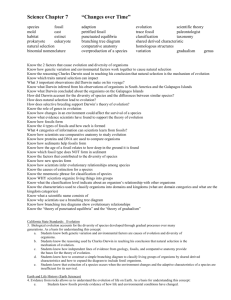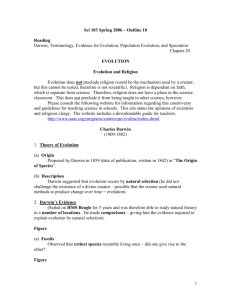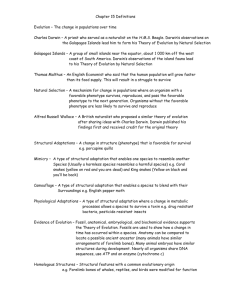The Theory of Evolution
advertisement
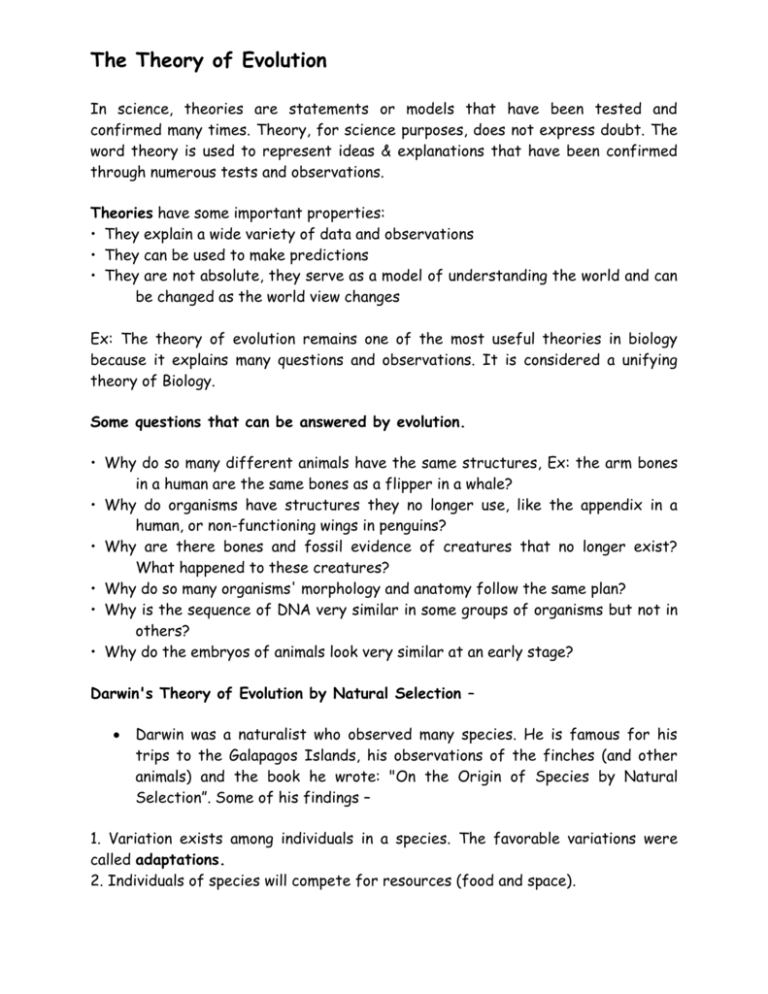
The Theory of Evolution In science, theories are statements or models that have been tested and confirmed many times. Theory, for science purposes, does not express doubt. The word theory is used to represent ideas & explanations that have been confirmed through numerous tests and observations. Theories have some important properties: • They explain a wide variety of data and observations • They can be used to make predictions • They are not absolute, they serve as a model of understanding the world and can be changed as the world view changes Ex: The theory of evolution remains one of the most useful theories in biology because it explains many questions and observations. It is considered a unifying theory of Biology. Some questions that can be answered by evolution. • Why do so many different animals have the same structures, Ex: the arm bones in a human are the same bones as a flipper in a whale? • Why do organisms have structures they no longer use, like the appendix in a human, or non-functioning wings in penguins? • Why are there bones and fossil evidence of creatures that no longer exist? What happened to these creatures? • Why do so many organisms' morphology and anatomy follow the same plan? • Why is the sequence of DNA very similar in some groups of organisms but not in others? • Why do the embryos of animals look very similar at an early stage? Darwin's Theory of Evolution by Natural Selection – Darwin was a naturalist who observed many species. He is famous for his trips to the Galapagos Islands, his observations of the finches (and other animals) and the book he wrote: "On the Origin of Species by Natural Selection”. Some of his findings – 1. Variation exists among individuals in a species. The favorable variations were called adaptations. 2. Individuals of species will compete for resources (food and space). 3. Some competition would lead to the death of some individuals while others would survive (survival of the fittest). 4. Individuals that had advantageous variations were more likely to survive and reproduce. Darwin's Finches: Darwin noted that all the finches on the Galapagos Island looked about the same except for the shape of their beak. His observations lead to the conclusion that all the finches were descendants of the same original population. The shape of the beaks were adaptations for eating a particular type of food (Ex. long beaks were used for eating insects, short for seeds) Lamarke's Theory of Acquired Characteristics – pg. 376 of text Some thought that you would gain or lose features if you overused or didn't use them, and you could pass these new traits onto your offspring. This was known as the Inheritance of Acquired Characteristics • A lizard that didn't use it legs would eventually not have legs and its offspring wouldn't have legs. • A giraffe stretched its neck to reach higher leaves, and this stretched neck would be a trait inherited by its offspring. Lamarke's Theory was eventually discarded - PROVEN TO BE WRONG! Why? Logically it doesn't work. Imagine if you were in a car accident and had a leg amputated. This does not mean that your children will only have one leg. Features gained during life are not passed on to children. Evidence of Evolution Fossil Evidence • If today's species came from ancient species, then we should be able to find remains of those species that no longer exist. • We have tons of fossils of creatures that no longer exist but bear striking resemblance to creatures that do exist today. • Carbon dating – gives an age of a sample based on the amount of radioactive carbon is in a sample. • Fossil record – creates a geologic time scale. Evidence from Living Organisms • Evidence of Common Ancestry – finch species on Galapagos Islands • Homologous Structures – structures that are embryologically similar, but have different functions, such as, the wing of a bird and the forearm of a human • Vestigial Organs – seemingly functionless parts, snakes have tiny pelvic and limb bones suggesting they evolved from 4-legged organisms. Humans have wisdom teeth, because at one time they needed this 3rd set of teeth to grind plants. • Biochemistry and DNA • Embryological development – embryos of different species develop almost identically Direct Observation of species change 1. wolves/dogs 2. dog breeds

